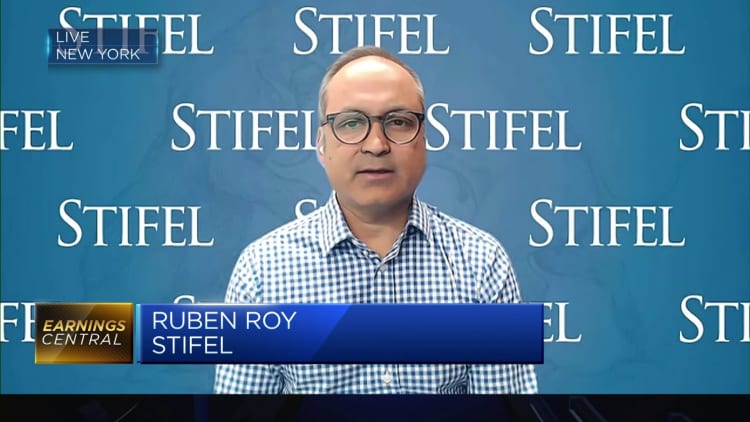Asia-Pacific markets fell Wednesday after ratings agency Fitch cut the U.S. credit rating from AAA to AA+, citing "expected fiscal deterioration over the next three years."
IG market analyst Tony Sycamore said this will spark risk aversion flows, which means lower equities in Asia, as well as safe haven buying of treasuries and currencies such as the Japanese yen and Swiss franc against riskier currencies, such as the Australian and New Zealand dollars.
Japan's Nikkei 225 led losses in the region, falling 2.3% and closed at 32,707.69, dragged by utilities and health technology stocks, while the Topix is also down 1.52% and ended at 2,301.76.
Hong Kong's Hang Seng index also slipped 2.27% in its final hour, mainly due to health-care stocks. Mainland Chinese markets were also in negative territory. The Shanghai Composite slid 0.89% to close at 3,261.69, and the Shenzhen Component was also down 0.35% to end at 11,104.16.
South Korea's Kospi fell 1.9% to 2,616.47, snapping a four day win streak and the Kosdaq also dipped 3.18% to 909.76. The country saw its inflation rate for July come in at 2.3% — its lowest level in 25 months.
Meanwhile, Australia's S&P/ASX 200 dropped 1.29% to close at 7,354.7 a day after the Reserve Bank of Australia held its benchmark interest rate at 4.1%.
Overnight in the U.S., the three major indexes ended mixed, with the Dow Jones Industrial Average up 0.2% and briefly touching its highest level this year, while the S&P 500 lost 0.27% and the Nasdaq Composite down 0.43%.
— CNBC's Samantha Subin and Hakyung Kim contributed to this report




